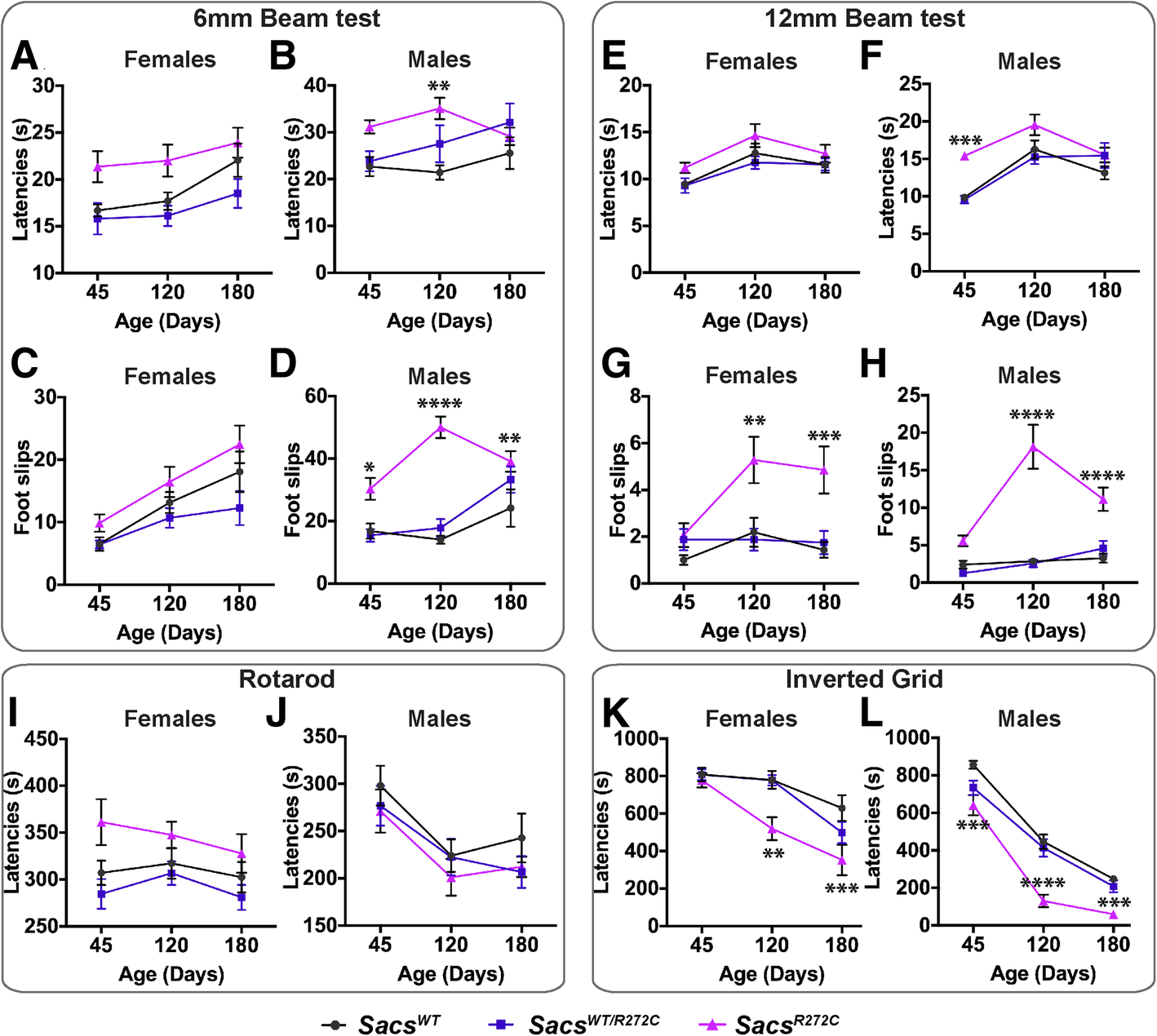Fig. 2
From: Sacs R272C missense homozygous mice develop an ataxia phenotype

SacsR272C mice display balance deficit and muscle weakness. (a–h) Results of balance beam tests of motor coordination for a cohort of mice tested at 40, 90 and 180 days of age. Significant deficits in SacsR272C male mice on the 6 mm beam test depicted by increased latencies in crossing the beam (b) and increased number of foot slips (d). Significant balance deficit for females SacsR272C is mostly observed by increased number of foot slips on the 12 mm beam (g). No significant difference in performance is observed on the accelerating rotarod between groups (i, j). Inverted grid test of mice at 50–365 days (k, l). Significant muscle weakness is observed in SacsR272C females starting at 120 days of age compared with control mice, whereas SacsR272C males show significant muscle weakness starting at 45 days. Data are presented as means ± SEM of three independent trials (n ≥ 14 females and n ≥ 15 males per group). R272C versus WT: *P < 0.05, **P < 0.01, ***P < 0.005; (two-way ANOVA with repeated-measures followed by Tukey’s post hoc comparison)
